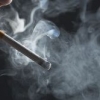Influenza delle attività sportive e del fumo sui linfonodi periferici nei pazienti con melanoma, analizzati tramite ultrasuoni ad alta risoluzione
 L'esame ecografico dei linfonodi periferici (LNs) gioca un ruolo importante nel trattamento preoperatorio e nel follow-up di pazienti con melanoma.
L'esame ecografico dei linfonodi periferici (LNs) gioca un ruolo importante nel trattamento preoperatorio e nel follow-up di pazienti con melanoma.
Obiettivo
È stato eseguito uno studio prospettico di 200 pazienti consecutivi con una storia di melanoma cutaneo invasivo, presso il Dipartimento di Dermatologia e Allergologia, nell'Università di Bonn, in Germania, per esaminare l'influenza delle attività sportive, del carico di lavoro fisico, della terapia con interferone alfa, delle abitudine al fumo, e delle infezioni del tratto respiratorio superiore sulla morfologia e il numero dei LNs analizzati mediante ultrasuoni ad alta risoluzione.
Metodi
Tra maggio 2010 e giugno 2011, 106 uomini e 94 donne (età media 51.1 ± 12.8 anni) sono stati inclusi in questo studio. Durante le loro visite di follow-up per il melanoma cutaneo, sono state eseguite le ecografie ad alta risoluzione della regione cervicale, ascellare e inguinale con LN. Sono stati misurati e controllati i diametri e i volumi di LN per i fattori sopra indicati.
Risultati
I pazienti attivi dal punto di vista sportivo avevano più LNs nelle regioni inguinali, un volume e un diametro maggiore di LN, e una larghezza massima superiore del margine ipoecogeno di LN rispetto ai pazienti non attivi. Pazienti con un elevato carico di lavoro fisico nelle loro occupazioni presentavano un volume significativamente maggiore per i LN più grandi. Rispetto ai pazienti non fumatori, quelli fumatori presentavano valori più alti nella quantità totale dei LNs, nel maggior volume dei LN, e nel maggior diametro degli stessi, in corrispondenza delle regioni cervicali. Gli altri fattori non hanno avuto un'influenza significativa sui parametri dei LN.
Limitazioni
La nostra popolazione di studio è stato troppo piccola per commentare con maggiore dettaglio sui fattori di influenza, in particolare le influenze delle varie attività sportive o l'abitudine al fumo.
Conclusione
L'attività sportiva, il carico di lavoro fisico, e l'abitudine al fumo devono essere sempre considerati come cofattori associati che influenzano gli aspetti sono-morfologici nei pazienti con melanoma cutaneo.
Storia della pubblicazione:
Titolo: Influence of sporting activity and smoking on peripheral lymph nodes in patients with melanoma analyzed by high-resolution ultrasound
Rivista: Journal of the American Academy of Dermatology. Volume 67, Issue 5 , Pages 853-860, November 2012
Autori: Torsten Hinz, Tobias Hoeller, Thomas Bieber, Andreas Blum, Monika-H. Schmid-Wendtner
Affiliazioni: Department of Dermatology and Allergy, University of Bonn, Bonn, Germany
Interdisciplinary Oncology Center Munich, Munich, Germany
Reprint requests: Monika-H. Schmid-Wendtner, MD, Interdisciplinary Oncology Center Munich, Nußbaumstr. 12, D-80336 Munich, Germany.
Abstract:
Background
The sonographic examination of peripheral lymph nodes (LNs) plays an important role in the preoperative treatment and in the follow-up of patients with melanoma.
Objective
A prospective study including 200 consecutive patients with a history of invasive cutaneous melanoma was performed at the Department of Dermatology and Allergy, University of Bonn, Germany, to examine the influence of sporting activity, physical workload, interferon alfa therapy, smoking habits, and infections of the upper respiratory tract on morphology and number of LNs analyzed by high-resolution ultrasound.
Methods
Between May 2010 and June 2011, 106 men and 94 women (mean age 51.1 ± 12.8 years) were included in this study. During their follow-up visits for cutaneous melanoma, high-resolution ultrasound examination of cervical, axillary, and inguinal LN regions were performed. LN diameters and volumes were measured and correlated with the above given factors.
Results
Sports-active patients had more LNs in inguinal regions, a higher volume and a larger LN diameter, and a higher maximum width of the hypoechoic LN margin in comparison with the nonactive patients. Patients with a hard physical workload in their occupations had a significantly higher volume of the biggest LN. Compared with nonsmoking patients smokers presented higher values in the total quantity of the LNs, in the greatest volume of LN, and in the greatest diameter of LN in the cervical regions. The other factors had no significant influence on the LN parameters.
Limitations
Our study population was too small to comment on influencing factors in more detail especially the influences of different sporting activities or smoking habits.
Conclusion
Sporting activity, physical workload, and smoking habits as associated cofactors influencing sonomorphologic aspects in patients with cutaneous melanoma should always be considered.





